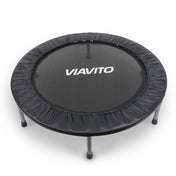With tennis being comfortably the most popular racket sport, it has an incredibly high uptake of players. That has also led to the market being inundated with equipment, to the point that many players will be overwhelmed with choice and settle for the first decent racket they come across.
However, much like any racket sport, the only way to get the most out of your racket is to fully customise it to suit your style of play. The best way to do this is to use a grip that perfectly matches your own style, strength and build.
That’s why here we'll take you through your options when it comes to tennis grips. We'll show you what choices there are, how they differ, and who each one is best suited for. That way, you’ll have all the information you need to ensure you get the best grip to fully maximise your potential.
Types Of Tennis Grips
Replacement Grips
Replacement grips are used to replace the original grip of the racket when it wears out. They are applied directly to the handle of a tennis racket and increase its level of both grip and comfort. They are ideal for use by all players, as they prolong the life of a racket and allow it to continue performing to a high level.
Overgrips
Overgrips serve a similar purpose but are placed over the original grip of a racket. They further increase its level of grip and comfort, as well as slightly increasing the thickness of the handle.
They make the racket feel close to how it would have done when you first purchased it and are ideal for players at intermediate and professional levels, as they allow the racket to continue performing at the highest possible level.
Things To Consider
Material
In tennis you will find grips made from both leather and synthetic materials, such as polyurethane. While both provide a similar level of grip, the synthetic versions tend to be a little more comfortable.
However, leather grips are much more durable, and they also provide a more natural feel. This increased synchronicity with the racket makes it the preferred option among many pros, so make sure to consider what it more important to you when choosing the material for your tennis grip.
Comfort
Ensuring you get a tennis grip that you find comfortable is essential to your continued enjoyment of the game. It is even more important for any players who play frequently, or are involved in long matches, so be sure to find one you are comfortable using.
Thickness
The main thing to consider with the thickness of a tennis grip is how much it will affect your style of play. Thicker grips are best suited to those with larger hands, greater upper body strength, or whose game relies largely on power. A thicker grip is also better for absorbing sweat, so you may want to consider one if that is an issue for you as well.
Durability
Due to the nature of the product, a tennis grip is going to wear out over time. However, replacement grips will last significantly longer than overgrips, while leather last longer than synthetic. Think carefully about how often you’re willing to change your grip before settling on which to go for.
Sweat absorption
The level of sweat absorption in a tennis grip can greatly affect how it performs. If you are someone who sweats profusely while playing, you will want to select an option with the best sweat absorption possible. If that is the case, I would also suggest focusing on overgrips, as they are much better than replacement grips at absorbing sweat, so will keep your grip level as high as possible.
Tackiness
The tackier a tennis grip is, the greater grip level it will have, however it achieves this by sacrificing sweat absorption. Consider how much you sweat and find a grip that gives you the balance of these factors you feel is best suited to you.
Weight
Tennis grips don’t weigh much at all, so this won’t be an issue for most people. However, for elite level players where every little detail matters it is still worth considering. This is particularly true for players whose game relies on speed, agility, or control, where you will want to look for the lightest available option.
Length
Most tennis racket grips can be cut to size, so length shouldn’t be a problem. However, if you plan to use a grip designed for another style of racket, check the length first to make sure it will fit, as tennis rackets are usually the largest type of racket on the market.
Padded?
Padded tennis grips will improve both the comfort and sweat absorption of the grip. That said, they will also increase its thickness as well. Consider everything from your size and strength to your style of play and select a grip that best balances these factors with your own personal needs.
Your budget
While tennis grips aren’t an overly expensive item, you may still want to look at buying in bulk if you go through them quickly. That way, you will get the best possible value from your purchase.
Tennis Grips Maintenance
There isn’t really anything other than cleaning that you can do to maintain a tennis grip. The nature of the product means they will wear out over time and need to be changed. That said, it is still important to keep it clean, as it will stop it from smelling and allow it to provide the maximum amount of grip for as long as possible.

